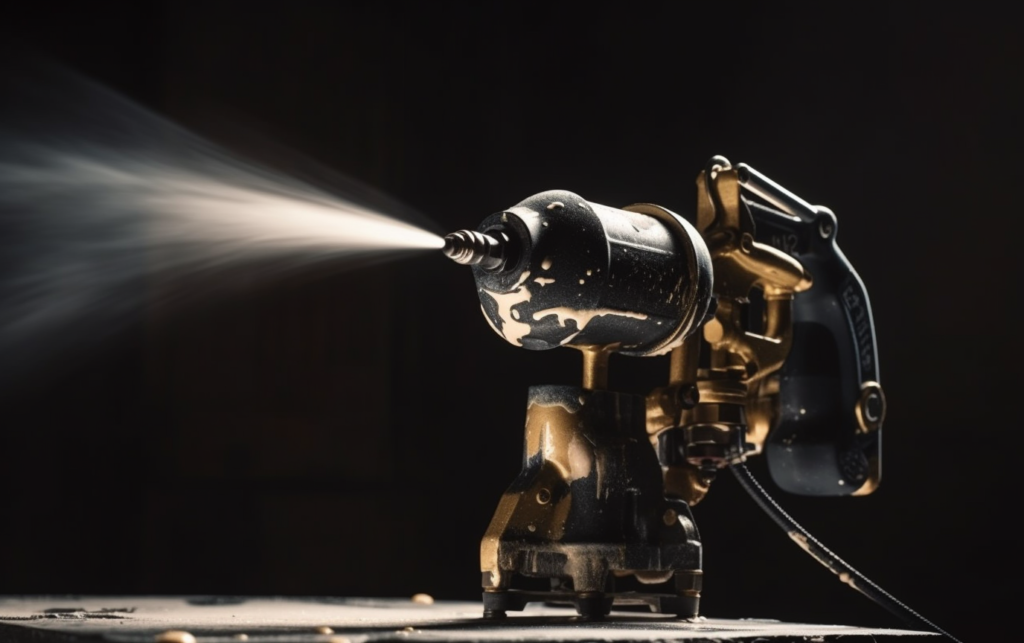
AI-generated website posts offer efficiency for SEO but may lack accuracy and context understanding. While AI boosts content volume and keyword targeting, its limitations can lead to inaccuracies
HVLP: The Gold Standard in the Spray Painting Method Universe
In the world of spray painting furniture techniques, a variety of methods have evolved, each with its unique advantages. From Airless Sprays to Electrostatic techniques, the paint application has been refined over the years to offer precision and quality. Yet, among these, the HVLP (High Volume Low Pressure) spray method stands out for its efficiency and fine finishing prowess. Let’s delve into the reasons why HVLP is often a preferred choice for many painting applications.
The answer lies in its unmatched efficiency and the quality of finish it offers. Not just for furniture, but for a range of applications, HVLP promises a consistency and fineness that few other methods can rival. It has been developed and enhanced over time, striving to meet the multifaceted needs of painting professionals and enthusiasts alike, setting it apart as a unique spray painting method in a class of its own.
A Brief Look at Spraying Methods
Airless Spray: Championing vast projects and exterior ventures, the Airless Spray approach employs intense pressure to transform paint into a fine mist. Its speed is unrivaled, especially for large-scale applications.
Air Assisted Airless: Integrating the advantages of airless and air spray methods, this technique offers extensive control and reduces overspray, proving beneficial when spraying MDF or other delicate materials.
LVLP (Low Volume Low Pressure) Spray: An offshoot of HVLP, the LVLP process uses lesser air volume at an identical low pressure. It’s the method of choice for petite tasks and ensures minimized overspray.
Electrostatic Spray: Favored in the industrial sector, Electrostatic methods charge paint particles and the target, ensuring extraordinary adhesion and lowered paint wastage. This method is particularly popular when selecting the best spray paint for MDF board.
Air Spray: A versatile contender, Air Spray employs compressed air to produce a universally fine spray pattern. Its adaptability makes it ideal for various materials.
Why Choose HVLP?
1. Versatility
Handling everything from solvent-based paints to water-based alternatives, HVLP’s versatility allows for multifaceted applications, ensuring no project is beyond its capabilities.
2. User-Friendly
For the DIY hobbyist or a professional looking to refine their technique, HVLP’s straightforward operation minimizes overspray risks and any potential for collateral damage.
3. Reduced Overspray
For those wanting a controlled spray pattern, especially when you need to spray paint board or intricate furniture details, HVLP is your best bet. This control is especially vital for indoor ventures or when precision is non-negotiable.
4. Higher Transfer Efficiency
HVLP boasts remarkable transfer efficiency. A significant portion of the paint settles flawlessly on the target surface, improving coverage and reducing paint consumption.
5. Finer Finishing
The fine particles birthed by HVLP sprayers promise a silky, even finish. Whether you’re working on luxury furniture, automotive masterpieces, or MDF cut to size, HVLP ensures every brushstroke looks professional.
6. Environmental Friendliness
Considering our planet’s health, HVLP emerges as the green warrior. With minimal air pollution and almost no airborne paint particles, it’s the environmentally responsible choice.
While the HVLP paint spraying method comes packed with undeniable advantages, it’s essential to remember it isn’t the one-size-fits-all solution. Bigger projects might lean towards the briskness of airless methods. But, for projects that demand precision, quality, and finesse, HVLP often takes the crown. The secret to painting success lies in harnessing the right method for the right task. When it comes to detail and controlled applications, HVLP remains unmatched.
FAQ
- Why should I consider spray painting furniture with HVLP?
HVLP offers a precise and controlled spray pattern, which is perfect for intricate details often found on furniture. This ensures a smooth, professional finish, especially when working on materials like MDF.
- How does the HVLP spray painting method differ from LVLP?
While both methods operate at low pressures, HVLP utilizes a higher volume of air compared to LVLP. HVLP is better suited for tasks requiring a finer finish, while LVLP is apt for smaller tasks due to its reduced overspray.
- What kind of spray paint should I use with HVLP?
HVLP sprayers are versatile and can handle a variety of paints. However, for MDF boards, water-based or acrylic paints are often recommended. Always consult with professionals for the best results.
- How does HVLP reduce the environmental impact compared to other spray paint board methods?
HVLP operates at lower pressures, which means fewer paint particles end up in the air. This results in reduced air pollution, making HVLP a more environmentally-friendly option.
- Is HVLP more cost-effective than other spraying methods?
Due to its higher transfer efficiency and reduced overspray, HVLP can lead to savings on paint consumption. While initial equipment costs might be higher, the long-term savings in paint and reduced waste can make it a cost-effective option for many projects.